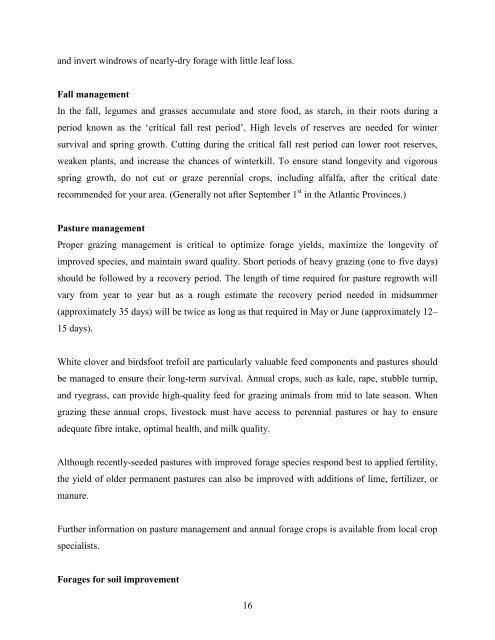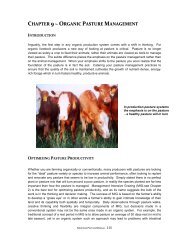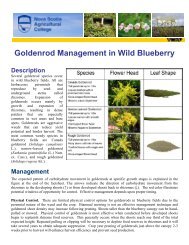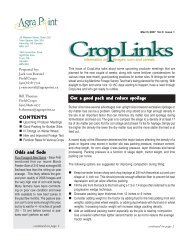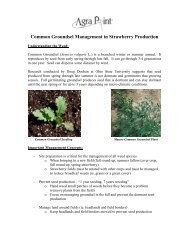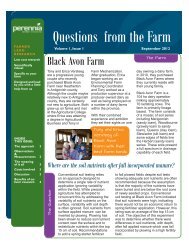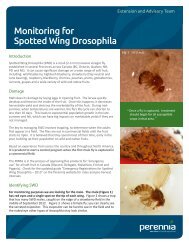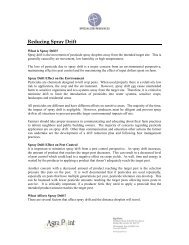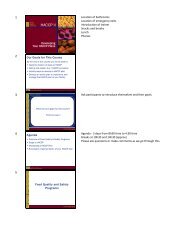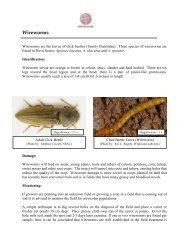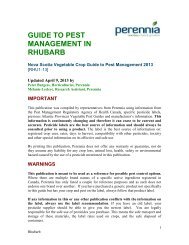Create successful ePaper yourself
Turn your PDF publications into a flip-book with our unique Google optimized e-Paper software.
and invert windrows of nearly-dry forage with little leaf loss.<br />
Fall management<br />
In the fall, legumes and grasses accumulate and store food, as starch, in their roots during a<br />
period known as the ‘critical fall rest period’. High levels of reserves are needed for winter<br />
survival and spring growth. Cutting during the critical fall rest period can lower root reserves,<br />
weaken plants, and increase the chances of winterkill. To ensure stand longevity and vigorous<br />
spring growth, do not cut or graze perennial crops, including alfalfa, after the critical date<br />
recommended for your area. (Generally not after September 1 st in the <strong>Atlantic</strong> Provinces.)<br />
Pasture management<br />
Proper grazing management is critical to optimize forage yields, maximize the longevity of<br />
improved species, and maintain sward quality. Short periods of heavy grazing (one to five days)<br />
should be followed by a recovery period. The length of time required for pasture regrowth will<br />
vary from year to year but as a rough estimate the recovery period needed in midsummer<br />
(approximately 35 days) will be twice as long as that required in May or June (approximately 12–<br />
15 days).<br />
White clover and birdsfoot trefoil are particularly valuable feed components and pastures should<br />
be managed to ensure their long-term survival. Annual crops, such as kale, rape, stubble turnip,<br />
and ryegrass, can provide high-quality feed for grazing animals from mid to late season. When<br />
grazing these annual crops, livestock must have access to perennial pastures or hay to ensure<br />
adequate fibre intake, optimal health, and milk quality.<br />
Although recently-seeded pastures with improved forage species respond best to applied fertility,<br />
the yield of older permanent pastures can also be improved with additions of lime, fertilizer, or<br />
manure.<br />
Further information on pasture management and annual forage crops is available from local crop<br />
specialists.<br />
<strong>Forage</strong>s for soil improvement<br />
16


